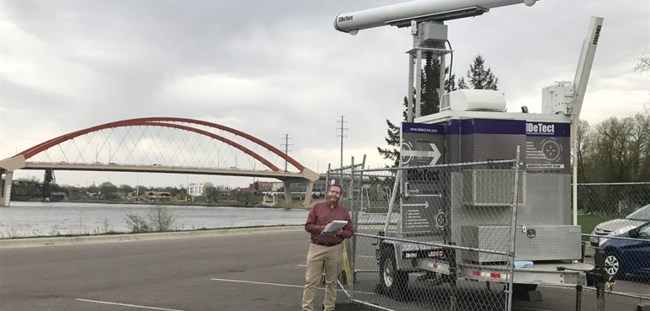
NPS photo by Nancy Duncan
The second largest cause of bird deaths in North American is birds flying into human-made structures. The three bridges in the study were chosen for factors including height, lighting and orientation. Once the data from the project has been analyzed, researchers will understand how these variables influence migrating birds. If they impact the birds in negative ways, changes in lighting on these and other bridges might prove helpful. Information from this study could also minimize bird collisions with bridges of the future by informing their design, orientation, and lighting!
Last updated: September 30, 2019
